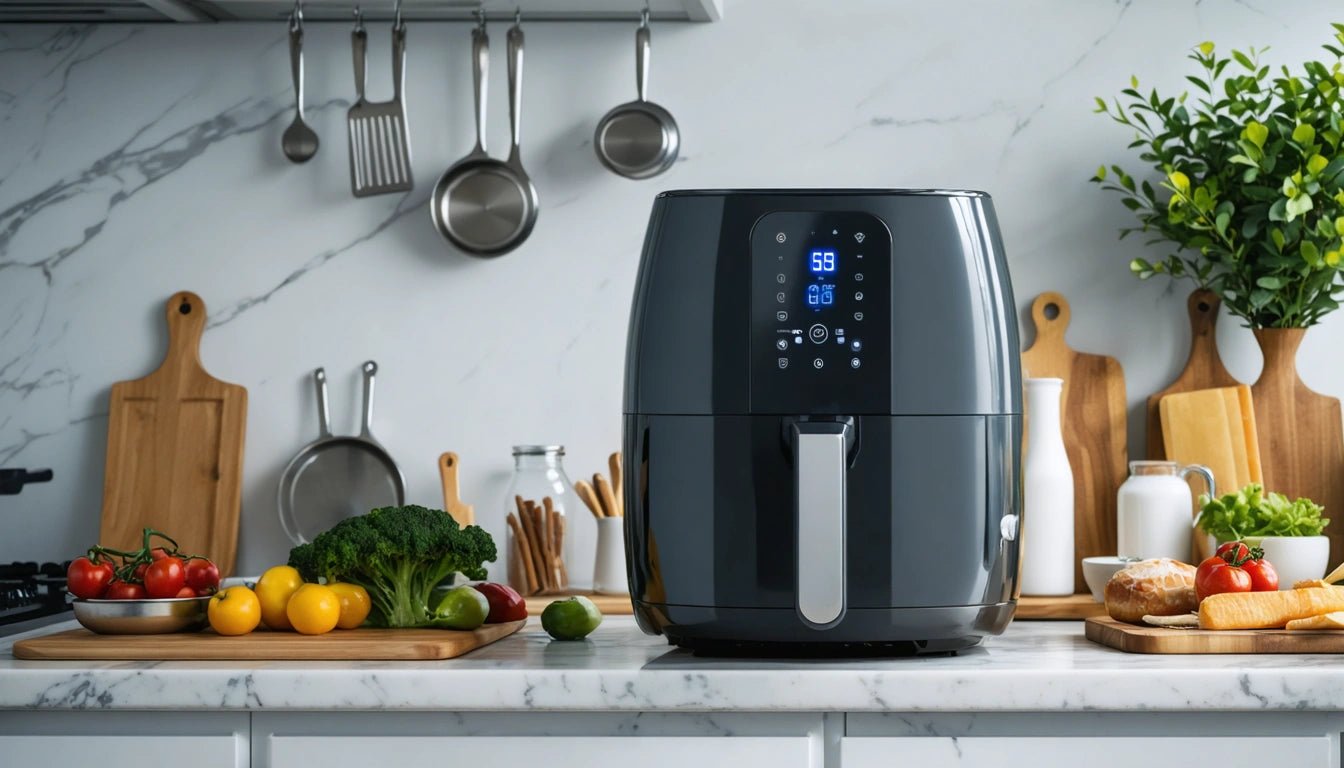Table of Contents
The Invention and Rise in Popularity of the Air Fryer
The air fryer has revolutionized home cooking, offering a healthier alternative to traditional deep frying while maintaining the crispy texture consumers love. This innovative appliance has transformed from a niche product to a kitchen staple in a relatively short time. Understanding when the air fryer was invented and tracing its journey to popularity provides insight into how new kitchen technology gains widespread adoption.
Invention of the Air Fryer: Origins and Creator
When was the air fryer invented? The air fryer was invented in 2005 by Fred Berghuijs, a product developer working for Philips, the Dutch electronics company. However, it was his colleague, Fred van der Weij, who refined the technology and is most commonly credited as the primary inventor of the modern air fryer.
The invention came about as a solution to a common problem: creating crispy fried foods without the unhealthy aspects of deep frying. Van der Weij's background in product design enabled him to develop the Rapid Air Technology that circulates hot air around food at high speeds, creating a crispy exterior similar to deep frying but using significantly less oil.
Early Development and First Commercial Models
After its invention, Philips filed patents for the air fryer technology in 2005 and 2006. The first commercial air fryer was introduced to the market by Philips at the IFA consumer electronics fair in Berlin in 2010. This original model, the Philips Airfryer, used the patented Rapid Air Technology and was marketed as a healthier way to enjoy fried foods.
The early adoption of air fryers was relatively slow, similar to the gradual acceptance of other innovative products like soda cans, which took time to become ubiquitous after their invention. The initial Philips models were expensive, limiting their appeal to early technology adopters and health-conscious consumers with disposable income.
First Generation Features
- Basic temperature controls (typically 175 °F to 400 °F)
- Simple timer mechanisms
- Limited capacity (usually 1.8 to 2.2 pounds of food)
- Minimal preset cooking functions
- Basic basket designs
Rise in Popularity: When Air Fryers Became Mainstream
When did air fryers become popular? While the first commercial models appeared in 2010, air fryers didn't achieve mainstream popularity until around 2015-2017. Several factors contributed to this surge in popularity:
The growing health consciousness among consumers created a perfect market for an appliance promising fried food texture with less fat. Additionally, as more manufacturers entered the market, prices dropped significantly, making air fryers accessible to a broader consumer base.
Social media played a crucial role in the air fryer's rise to popularity. Food bloggers, influencers, and home cooks began sharing air fryer recipes and results on platforms like Instagram, Pinterest, and later TikTok. This user-generated content served as powerful word-of-mouth marketing.
The COVID-19 pandemic in 2020 further accelerated air fryer adoption as people cooked more meals at home and experimented with new appliances. This period saw unprecedented growth in air fryer sales worldwide.
Technological Advancements in Air Fryer Design
Since the first air fryer was made, the technology has evolved considerably. Modern air fryers bear little resemblance to their early counterparts, with manufacturers continually improving designs to meet consumer demands.
When comparing early models to current offerings, several key advancements stand out. Similar to how ink technology evolved from basic formulations to sophisticated modern variants, air fryers have undergone significant refinement.
Key Technological Improvements
- Increased capacity (from single baskets to dual-basket designs)
- Digital interfaces replacing analog controls
- Smart features including app connectivity and voice control
- Multiple cooking functions (air fry, roast, bake, dehydrate)
- Improved energy efficiency
- Enhanced air circulation systems for more even cooking
These advancements have expanded the versatility of air fryers, transforming them from single-purpose appliances to multi-functional cooking devices that can replace several kitchen tools.
Cultural Impact and Consumer Adoption
The air fryer has achieved cultural significance beyond most kitchen appliances. It has spawned dedicated cookbooks, online communities, and even specialized accessories. Our collection of functional kitchen accessories shows how complementary products often develop around popular appliances, creating entire ecosystems of related items.
Consumer adoption patterns reveal interesting demographic trends. Initially popular among health-conscious millennials, air fryers have crossed generational boundaries to become popular with baby boomers seeking convenient cooking methods and Gen Z users drawn to the appliance's social media popularity.
The air fryer has also influenced restaurant menus and food product development. Many frozen food manufacturers now include air fryer instructions on packaging, and some products are specifically designed to be prepared in air fryers.
Like the evolution of tin cans from utilitarian packaging to versatile food storage, air fryers have transformed from novelty appliances to essential kitchen tools that influence how we prepare and think about food.
The Future of Air Fryers: Innovation and Market Expansion
The air fryer market continues to evolve, with several trends pointing to future development. Integration with smart home ecosystems is becoming more common, allowing users to control their air fryers remotely or through voice commands.
Sustainability is another focus area, with manufacturers working on more energy-efficient models and using eco-friendly materials. Some brands are developing air fryers with recyclable components and reduced plastic usage.
The global air fryer market is projected to continue growing, especially in emerging markets where adoption is still in early stages. As technology improves and prices continue to decrease, air fryers are likely to become as common in kitchens worldwide as microwaves.
Who invented the air fryer may be a simple question with a straightforward answer, but the appliance's journey from invention to global phenomenon demonstrates how innovative technology, timing, and consumer trends can combine to transform how we cook and eat. The air fryer's story is not just about a new appliance but about changing attitudes toward health, convenience, and food preparation in the modern home.



















